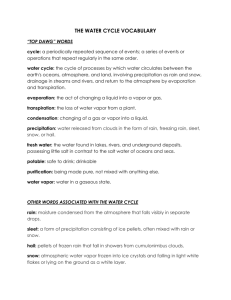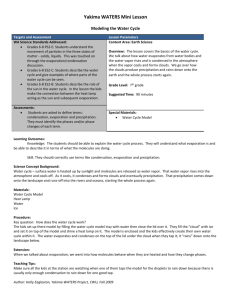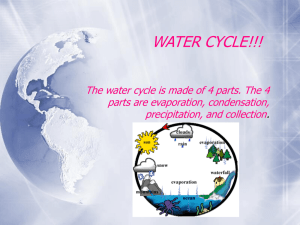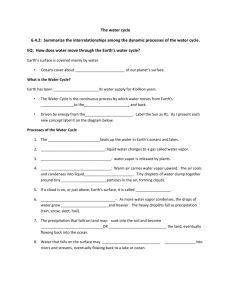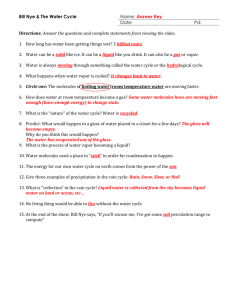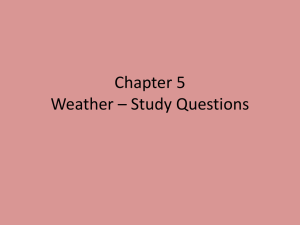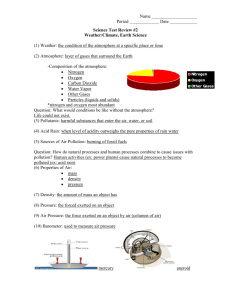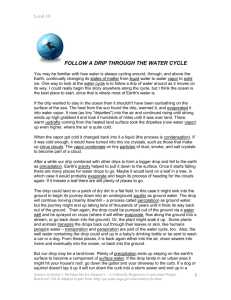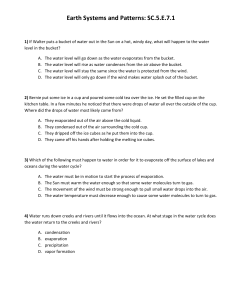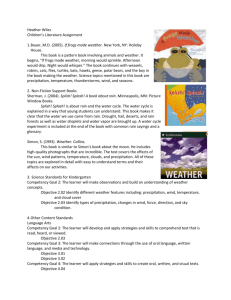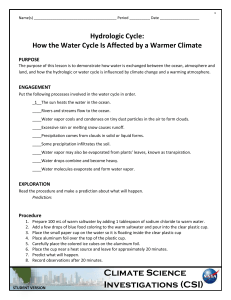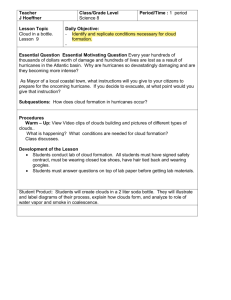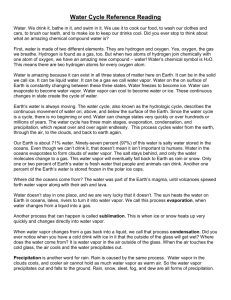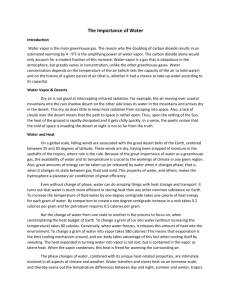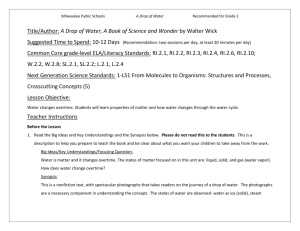Water In The Atmosphere Notes KEY
advertisement
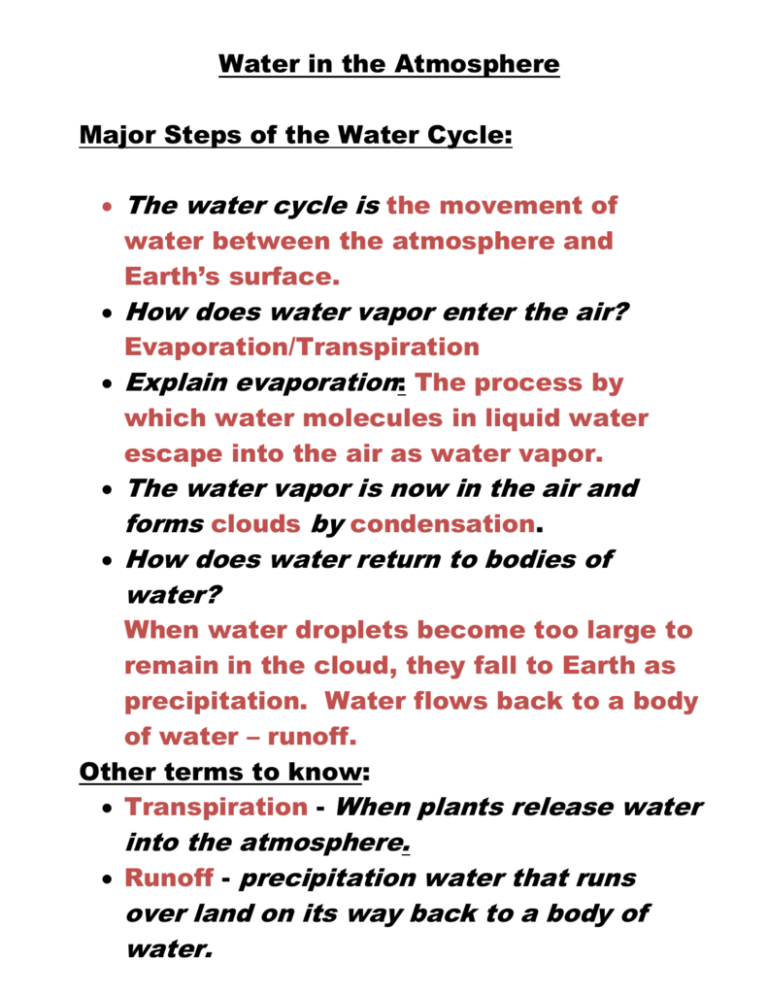
Water in the Atmosphere Major Steps of the Water Cycle: The water cycle is the movement of water between the atmosphere and Earth’s surface. How does water vapor enter the air? Evaporation/Transpiration Explain evaporation: The process by which water molecules in liquid water escape into the air as water vapor. The water vapor is now in the air and forms clouds by condensation. How does water return to bodies of water? When water droplets become too large to remain in the cloud, they fall to Earth as precipitation. Water flows back to a body of water – runoff. Other terms to know: Transpiration - When plants release water into the atmosphere. Runoff - precipitation water that runs over land on its way back to a body of water. Details: Evaporation (pg 54): An increase in energy (from solar radiation), causes water molecules to move faster, fast enough to change matter from a liquid to a gas. Water (liquid) changes into water vapor (gas). Warm air above the surface of the Earth has molecules that are more spread out (less dense), which means there is room for more water vapor. This water vapor then rises with the rising warm air during convection. Condensation: The rising air during convection starts to cool. Because the air molecules lose energy, they start to slow down, move closer together, and the air becomes more dense. When the air cools, and becomes more dense, there is no more room for water vapor. The air is full or saturated and the water vapor is forced out and condenses or turns back into a liquid. The temperature at which condensation begins is called the dew point. What is needed for water vapor to condense? (pg 57) Tiny particles must be present so the water has a surface to condense on. When water molecules condense on particle, CLOUDS are formed. Precipitation (pg 62): Eventually, clouds become very heavy, due to all those clinging water drops. Precipitation is any form of water that falls from clouds and reaches Earth’s surface. Describe the five types of precipitation: 1.Rain: Liquid water drops Most common kind of precipitation. 2.Sleet: Rain that passes through a layer of below freezing air on its way to the ground. Water drops freeze in ice. 3.Freezing Rain: Rain drops that freeze when they touch a cold surface. 4.Snow: Water vapor converted directly into ice crystals. Snowflakes have many different shapes and patterns. 5.Hail: Forms inside cumulonimbus clouds (thunderstorm clouds). Round pieces of ice formed when frozen drops get blown back up into the cloud combine, become heavy and fall to the ground.

